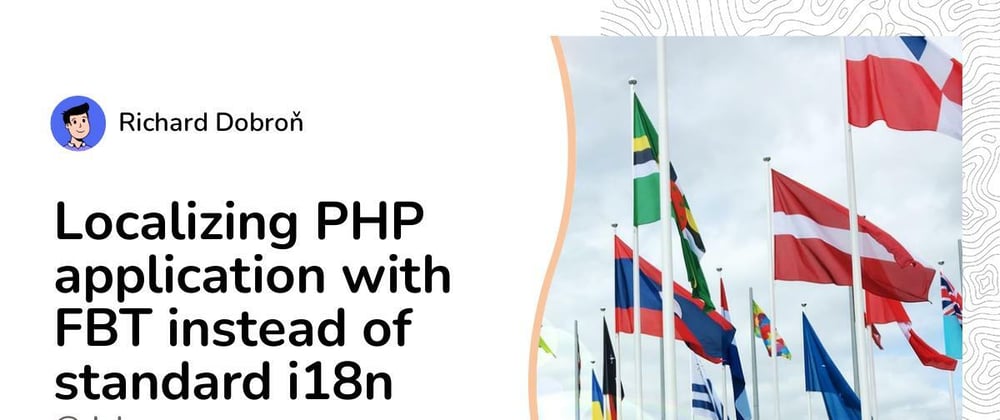Since about 2010, I have been looking for a translation framework for PHP that can generate very complex phrases and at the same time combine options such as singular/plural and work with genders (male, female, unknown) and ideally also format numbers according to the standards of the given country or region — unsuccessfully. In 2018, Facebook released FBT — an open source localization framework that provides a more efficient way of defining content for flexible and high-quality localization. I didn’t hesitate at all. I gradually started to rewrite this JavaScript version into PHP, and even if a few small things were not entirely according to the original code, I succeeded. It was my challenge that I finished in about 40 days (better said, evenings 😊).
There are many reasons why the common i18n libraries are very inadequate. The main ones are:
- misunderstanding of the native text by the translator (does not know the context),
- insufficient/nonsensical code combinations for translation,
- do not support features like enums or pronouns,
- and many more…
Fortunately, FBT can solve all of this. However, it is not easy to use it for the first time when you are not familiar with it. But I will be happy to advise you on how to use it.
1. Install the FBT package
composer require richarddobron/fbt
2. Set your FBT configuration
<?php
require ("vendor/autoload.php");
\fbt\FbtConfig::set('author', 'your name/team');
\fbt\FbtConfig::set('project', 'project name');
\fbt\FbtConfig::set('path', '/path/to/storage/fbt');
3. Language and gender settings
If you just want to change the interface language, just use:
\fbt\FbtHooks::locale('sk_SK'); // app locale
If you have an application in which users log in, you can use the interface IntlViewerContextInterface:
After implementation, set viewerContext:
$loggedUserDto = ...;
\fbt\FbtConfig::set('viewerContext', $loggedUserDto);
4. Prepare translations files
Facebook has devised their own system of labeling languages, you can find a list of them at this link.
From this list, choose the languages into which you want to translate your website or application.
I usually add them to the directory /storage/fbt/
File name will look like this: sk_SK.json
5. Add FBT scripts to composer.json
- Native phrases can also be easily translated via the app editor Swiftyper Translations.
6. Add your texts
Native phrases are always expected in English, it might look something like this:
7. Translate collected texts
This is what the collected source strings look like in the .source_strings.json file after script execution:
Now we are ready to generate a file in which we will write the translations for the collected source strings:
composer run generate-translations
The /storage/fbt/sk_SK.json file now contains the hash keys of the source phrases that we can now translate. I make translations into Slovak, so I can use the gender of the {name} token and adapt the variations of the given text precisely. This step is a bit difficult for some translations with variants, as you have to work with the variations key.
You can also find several types of translations at this link.
After completing the translations, we run the command that creates the translations for the application:
composer run translate-fbts
Finally, this command will generate a production file with translations using Jenkins hash.
Your app is now translated! Hurray!
Thanks for reading 🙏.








Oldest comments (0)